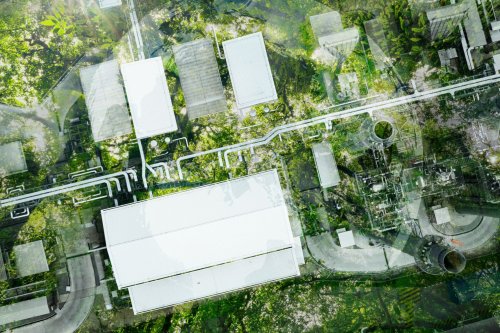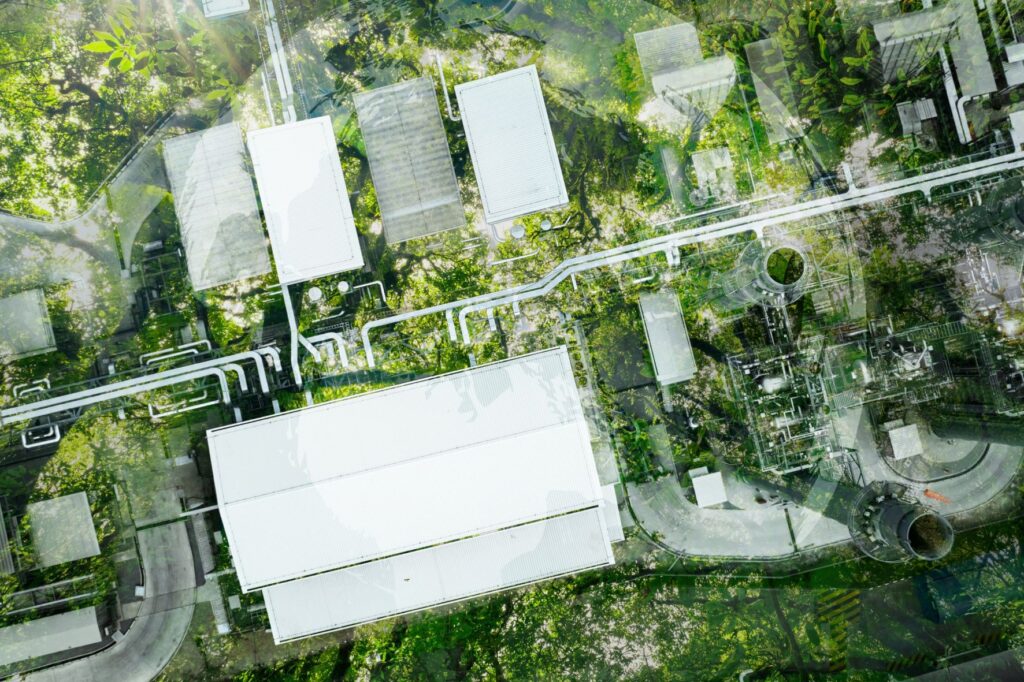A Year of Practical Implementation and Sustainable Solutions
Ratingen, Germany – 27th of May 2025 Despite the ongoing AI revolution and widespread publications of artificial intelligence advancements, experts emphasise that AI implementation in manufacturing remains remarkably limited.

[Source: Mitsubishi Electric Europe] AI implementation in sustainable strategies
“When we look at the global manufacturing landscape, only about one in a thousand facilities have successfully implemented advanced AI solutions,” reveals Jacek Smoluch, automation expert at Mitsubishi Electric. This stark reality highlights the significant gap between AI’s potential and its current practical adoption in manufacturing.
2024 marked a turning point in manufacturing automation, though experts emphasise that digital transformation remains a marathon rather than a sprint. “People often overestimate what can be achieved in one year and underestimate what can be achieved in a decade,” notes Smoluch. This perspective is particularly relevant given the limited penetration of AI technologies in global manufacturing operations.
Expensive electricity helps practical sustainability
Rising energy costs worldwide is one of the main reasons transforming sustainability from a marketing initiative into a business imperative. “Energy efficiency is no longer just about green marketing,” explains Smoluch. “With electricity prices reaching unprecedented levels, optimisation of energy consumption has become crucial for maintaining profitability.” This led to increased implementation of AI-driven energy management systems, focusing on actual cost savings rather than greenwashing campaigns.
Global supply chain disruptions pushed local sourcing forward
Global supply chain disruptions, particularly affecting deliveries from Asian countries, drove a significant trend towards local sourcing. This shift not only improved supply chain reliability but also resulted in reduced environmental impact through shorter transportation routes and decreased reliance on long-haul shipping. The trend represents a practical approach to sustainability, where environmental benefits align naturally with business necessities.
Real-time maintenance vs. scheduled
2024 saw significant advancement in AI-driven maintenance systems. These solutions now analyse real-time equipment data to predict failures and optimise performance. “We can now use AI to recommend specific actions, like reducing a robot’s speed to 70%, extending its operational life while maintaining production efficiency,” Smoluch points out. This trend marks a shift from scheduled to predictive maintenance, reducing downtime and extending equipment lifespan. Shifting from scheduled to on-demand maintenance eliminates the removal of perfect parts and replacing them with new ones just to mitigate downtime risks. Predictive maintenance not only allows the prolonged life of perfectly good parts but also indicates maintenance of parts that wore off sooner than expected.
Fear of AI replacing people continues
The integration of AI systems sparked a notable trend in workforce development. Rather than wholesale replacement of human workers, successful implementations focused on task reallocation and upskilling. However, this trend revealed challenges, as not all workers embraced retraining opportunities, highlighting the need for careful change management in digital transformation. We must admit that implementing AI can lead to human work replacement, yet this is an ongoing feature of any industrial revolution. After all, engines, electricity and computers have had the same effect historically, yet no one can imagine life without them anymore.
Progress through Real-Time data
While still limited to a small percentage of facilities, AI-driven real-time optimisation emerged as a significant trend. These systems can adjust production parameters instantly, improving efficiency and reducing waste. This represents a shift from traditional data collection and analysis to immediate, automated data-driven response systems.
2025 a year of AI? Obviously yes
The manufacturing sector enters 2025 with these trends gaining momentum, though implementation rates vary significantly across regions and industries. “Success in AI implementation comes from taking measured steps and building solid foundations,” concludes Smoluch. “The key is understanding that this is a journey, not a destination.”
“Density of AI” in manufacturing in 2025 may increase not only through huge investments and plant transformations but mainly through the addition of machines, robots, and devices with AI capabilities built-in. Such plug-and-play AI implementations are revolutionary in their simplicity and effectiveness, and they may change the AI game from now on.
The convergence of AI trends – practical sustainability, supply chain localisation, AI-driven optimisation, and workforce transformation – reshapes manufacturing operations. While only a fraction of facilities currently leverages advanced AI solutions, the practical benefits demonstrated in 2024 will likely accelerate adoption rates in the coming years, particularly as energy costs and supply chain reliability remain critical business concerns.
This article complements the recent Mitsubishi Electric expert webinar focused on AI’s impact on manufacturing in 2025. During this insightful session, Mitsubishi Electric specialists thoroughly explored the manufacturing trends highlighted above and shared their expert perspectives on the industry’s future direction.
If you missed the live event or would like to revisit the valuable insights about AI in manufacturing and emerging trends for 2025, you can watch the full webinar recording on Youtube. The session features comprehensive analysis and practical examples of the transformations currently reshaping the manufacturing landscape.
Link to the video: https://www.youtube.com/watch?v=wQm4I4Y1ik8








